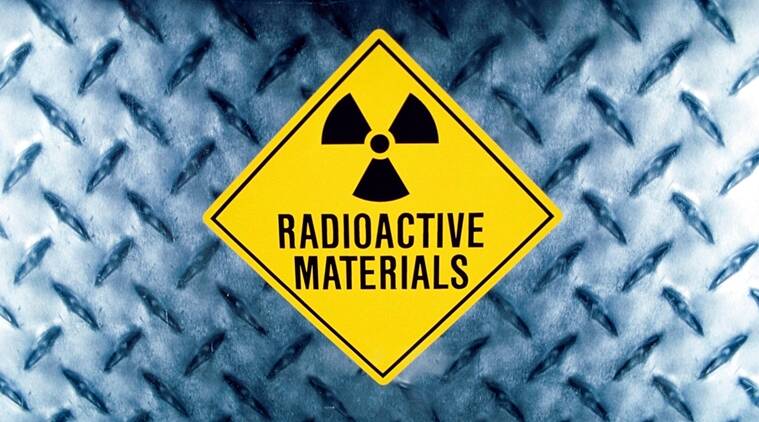Radioactive Consequences of a War in Ukraine
 A war in Ukraine could lead to thousands of radioactive sources getting lost, or worse, getting stolen and repurposed for political destabilization.
A war in Ukraine could lead to thousands of radioactive sources getting lost, or worse, getting stolen and repurposed for political destabilization.
So what is a radioactive “source”? It is a material that is specifically manufactured for the purpose of emitting radiation. For example, some forms of cancer are treated using radiotherapy whereby intense gamma radiation, emitted from a pencil-sized lump of radioactive metal, is directed at the tumor. This lump of highly radioactive metal is a radioactive “source”.
Strong radioactive sources can be dangerous, even lethal. For this reason they are subject to regulatory control. As a result of the 2014 armed conflict in Ukraine’s Donbas region, more than 1,200 radioactive sources escaped regulatory control, making them so-called “orphan sources”. Some of these sources are so highly radioactive, they can cause death after mere minutes of unshielded exposure.
Who is ensuring these sources don’t fall into the hands of criminal organizations? Did the self-proclaimed Donetsk People’s Republic (DPR) have this on their priority list in 2014? Radiation protection certainly does not seem to be their primary focus, judging from their 2018 decision to stop maintaining the site of a previous nuclear explosion in Yunkom, allegedly leading to radiation contamination of surface and groundwaters.
As alarming as the loss of the mentioned 1,200 sources is, according to authorities, Ukraine is in possession of 24,586 radiation sources, 15 nuclear reactors and a few uranium mines. At the time of writing, these sources and facilities are under Ukrainian regulatory control. Ukraine has a history of working closely with the United States and the international community to secure special nuclear materials and radiological threats following the collapse of the Soviet Union. But the country’s well-developed protection system for nuclear installations and radioactive sources is bound to fail where it loses territorial sovereignty.
For starters, the notion of operating nuclear reactors in a war zone harbors great risk. Given the past conflict, where a commercial airliner was hit by a missile killing all 298 aboard, there is little reason to expect nuclear power plants to be off limits, neither for cyber warfare, nor for pot shots in a kinetic war.
Beyond that, what will happen to strong radioactive sources if Ukraine loses control over them? In the best case, Russia will exercise strict regulatory control over them. Otherwise, they may eventually reappear in the IAEA’s illicit trafficking database. Far worse outcomes are plausible if these orphan sources are used in targeted attempts at political destabilization. Consider an attack on European critical infrastructure. The dispersion of radioactivity from a strong source could render public infrastructure unusable for several weeks. Imagine this happening to Warsaw’s Metro, on which 673,000 commuters rely on daily. Or in Moldova’s parliament building in Chișinău. These examples, to be clear, are hypothetical. I am not aware of evidence supporting them as being likely. Still, the budget and skills required to carry out such an attack are not beyond the means of most criminal organizations. We’ve seen radiological attacks on politically exposed persons perpetrated on the soil of western democracies before. It does not take an excessive amount of fantasy to imagine a controversial politician receiving a letter laced with highly radioactive CsCl-137 salt, causing an already poisonous political dialog to turn violent.
Despite the relative simplicity of carrying out radiological terrorism, the incidence of attempts to carry out such acts have been rare. This knowledge offers little guarantee for the future, especially if we are not vigilant. The European Union is spending more than €1 billion on customs detection equipment, specifically including radiation detection. This is a sensible measure, ideally accompanied by avoiding the risk in the first place. It would be comforting to know that the powers involved will take appropriate protective action to secure dangerous radioactive sources. Let us hope this is not wishful thinking.
Related posts:
Category: EUROPE & EURASIA, FOREIGN POLICY & SECURITY, INTERNATIONAL LAW & HUMAN RIGHTS

